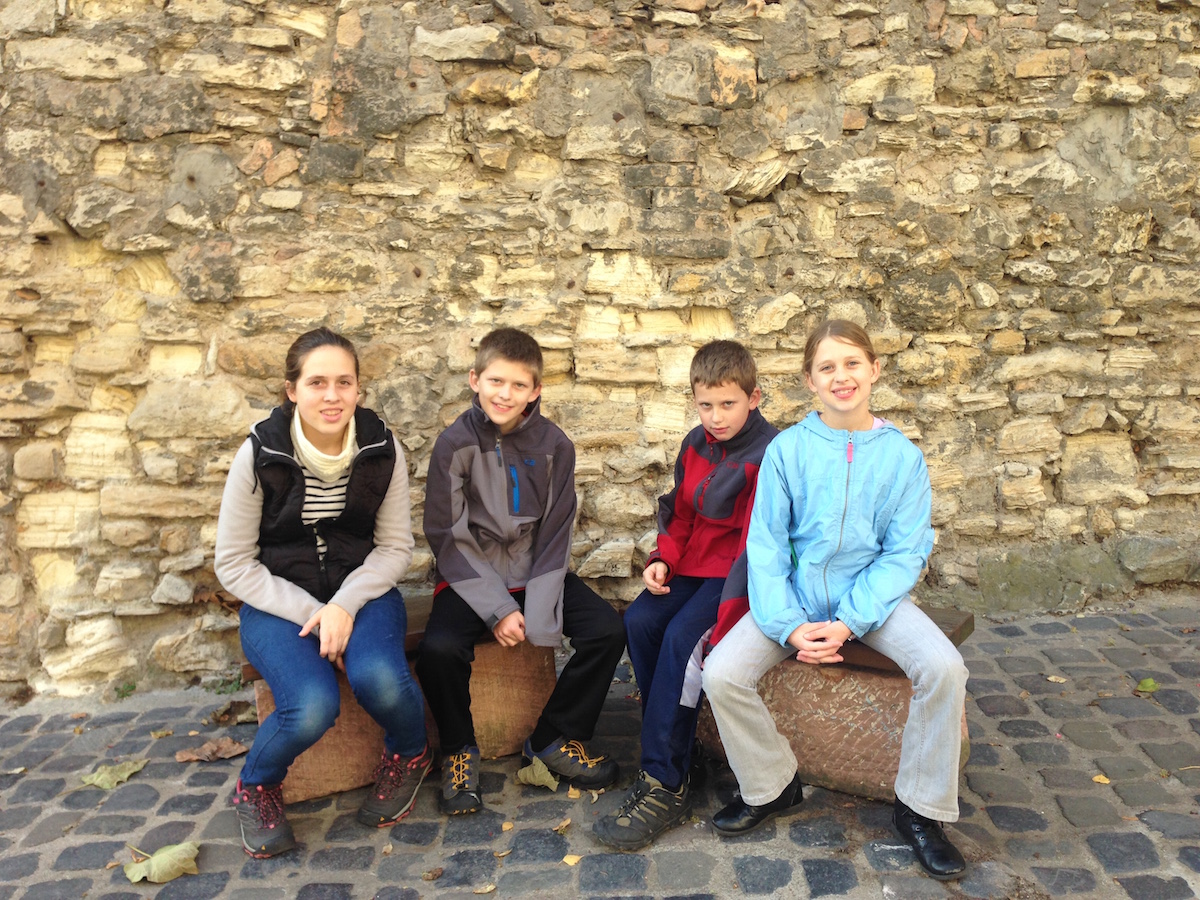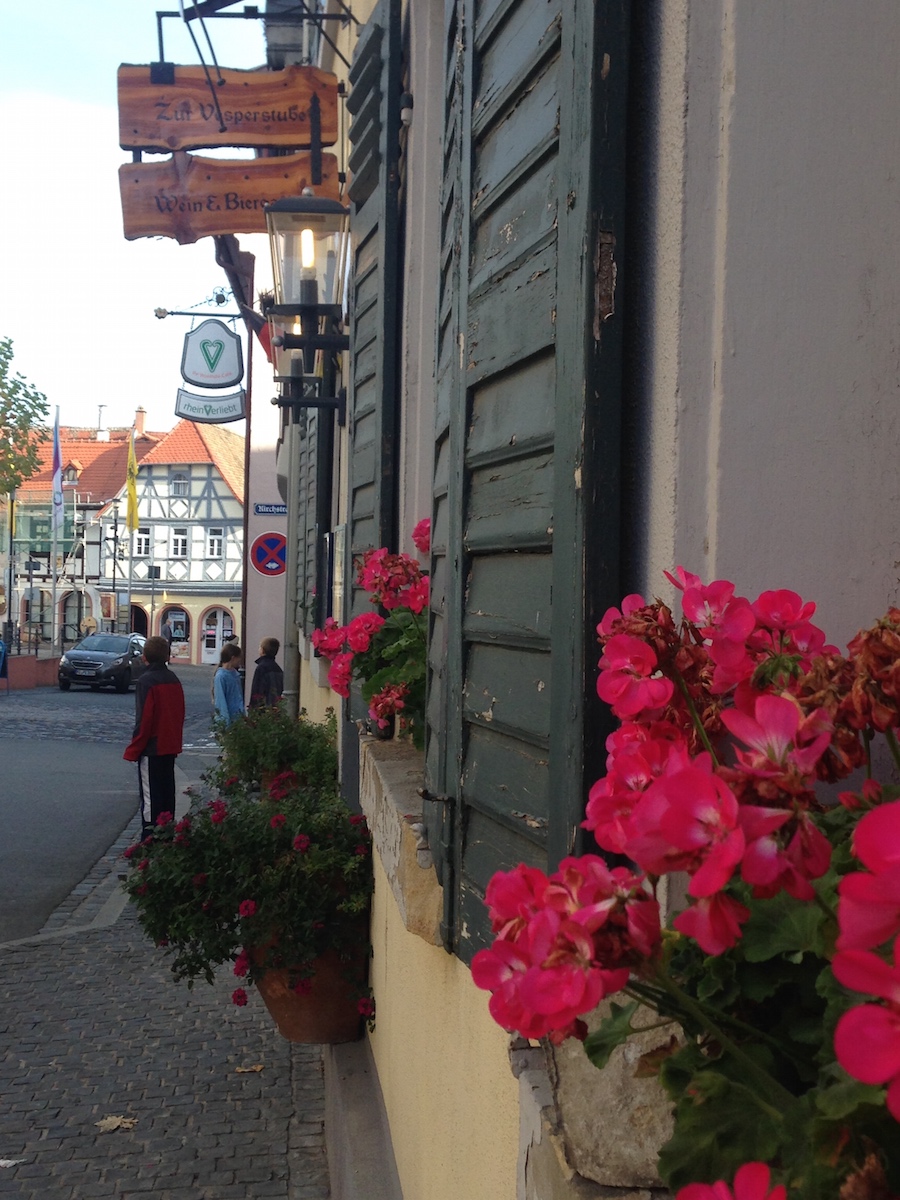Oppenheim Labyrinth
Thursday, November 12, we went to Oppenheim Labyrinth. Oppenheim is a small, pretty town in Germany, with a population of 7,000 people. It was a center of trade in the Middle Ages, but now just a sleepy neighborhood of people. And underneath it all is a labyrinth.
When we got there we saw signs for the labyrinth and found a parking lot. As we walked down the street we saw an ice cream parlor; but Mom walked on. We finally found the labyrinth. But the man inside told us we could not go until 2.00pm and it was 12.00pm. He warned us that when we came at 2pm we still might not get in because a tour must be at least 7 people.

He gave Landon, Jack, Betsy, and I decorated pencils with heads on the end. He said they were left over from Halloween. Jack, Landon, and Betsy, all chose the same clown and I chose a girl with yellow hair and a green checked hat, I think they chose in a hurry because their pencils were all the same. Mom said we would wait and we went back to the ice cream parlor for ice cream. I had Vanilla, Landon had Cotton candy, Jack and Betsy had Cherry and Mom had Chocolate.
Then we went to a cathedral, And then another cathedral. Then we went back to the labyrinth. Since no one else had showed up to go on the tour, Mom paid extra for a private tour for just us. This meant it would be in English, not German!
 The tour was wonderful and so was the person who did it. Before going into the Labyrinth we had to get helmets on. Betsy got a blue one, Jack, Landon, and Mom got red, and I got green, The guide had yellow.
The tour was wonderful and so was the person who did it. Before going into the Labyrinth we had to get helmets on. Betsy got a blue one, Jack, Landon, and Mom got red, and I got green, The guide had yellow.
We learned a great deal to think about. The labyrinth had been used for storing trade goods and wine, but in the 30 years war, 1618 to 1648, Spaniards came and it was used as a hiding place by the townspeople. In 1689 an invading French king burned the whole town down, and the people had to flee. When the townspeople finally came back they lived in the labyrinth until their houses were re-built. The labyrinth was made of stone, the newer parts are made of brick, and there are some natural parts in the labyrinth, and I don't know what that it is made of. There are lots of holes (niches) in the wall and the shape depends on the owner. The house shape means that the church owns that section, and so on.
During WWII, the people wanted it as a bomb shelter, so they divided the labyrinth into rooms by making walls and people are still trying to find those rooms and passages to this day. There was a place where there was a large plate of glass on the ground, and a hole (room) beneath it, and the guide said it had been hidden over time and while the workers were re-burrowing the labyrinth after WWII, the workers would eat in the large room above it. One day a man lost his fork while eating and could not reach it because it fell into a deep crack in the floor. When they shined a flashlight down they saw open space. So they opened it up to reveal this chamber lower down. The guide said that it probably would be 25 miles to hike the entire labyrinth, and there are 2 labyrinths, we were in the upper one. The lowest area we were in smelled like rust, (walking back and forth I could tell the air difference) and at the end of a passage way was cast-iron rubbish and junk, all rusty. For a number of years, when the labyrinth was not used, people would throw their trash into it from their basements. That is why the trash is there. When they were cleaning out the labyrinth after WWII, they left this one pile of trash there as a memory of what had once happened to the labyrinth. The guide told lots of interesting stories, and we walked through a lot of narrow passageways.
Then we went home.




